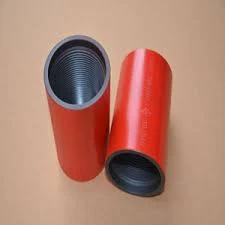- Afrikaans
- Albanian
- Amharic
- Arabic
- Armenian
- Azerbaijani
- Basque
- Belarusian
- Bengali
- Bosnian
- Bulgarian
- Catalan
- Cebuano
- Corsican
- Croatian
- Czech
- Danish
- Dutch
- English
- Esperanto
- Estonian
- Finnish
- French
- Frisian
- Galician
- Georgian
- German
- Greek
- Gujarati
- Haitian Creole
- hausa
- hawaiian
- Hebrew
- Hindi
- Miao
- Hungarian
- Icelandic
- igbo
- Indonesian
- irish
- Italian
- Japanese
- Javanese
- Kannada
- kazakh
- Khmer
- Rwandese
- Korean
- Kurdish
- Kyrgyz
- Lao
- Latin
- Latvian
- Lithuanian
- Luxembourgish
- Macedonian
- Malgashi
- Malay
- Malayalam
- Maltese
- Maori
- Marathi
- Mongolian
- Myanmar
- Nepali
- Norwegian
- Norwegian
- Occitan
- Pashto
- Persian
- Polish
- Portuguese
- Punjabi
- Romanian
- Russian
- Samoan
- Scottish Gaelic
- Serbian
- Sesotho
- Shona
- Sindhi
- Sinhala
- Slovak
- Slovenian
- Somali
- Spanish
- Sundanese
- Swahili
- Swedish
- Tagalog
- Tajik
- Tamil
- Tatar
- Telugu
- Thai
- Turkish
- Turkmen
- Ukrainian
- Urdu
- Uighur
- Uzbek
- Vietnamese
- Welsh
- Bantu
- Yiddish
- Yoruba
- Zulu
bull plug pressure rating
Understanding Bull Plug Pressure Ratings Importance and Implications in Oil and Gas Operations
In the oil and gas industry, ensuring safety and efficiency during operations is a paramount concern. One crucial aspect of this is the bull plug, a critical component used in various pipeline systems. A bull plug's pressure rating determines its ability to withstand internal pressure within pipelines, making it essential for maintaining system integrity and preventing hazardous incidents.
What is a Bull Plug?
A bull plug is a type of closure fitting used in pipelines, valves, and other fluid transport systems. It serves as a seal to prevent the escape of fluids and to ensure that the systems maintain their intended pressure levels. Typically, bull plugs are utilized when a section of a pipeline is taken offline for maintenance, repair, or inspection. By effectively sealing the pipeline, they help control the pressure and ensure that the workflow can proceed safely.
Understanding Pressure Ratings
The pressure rating of a bull plug is a crucial specification that indicates the maximum pressure the plug can safely accommodate without failure. This rating is determined through rigorous testing and is often standardized by organizations and safety regulations. Pressure ratings are generally expressed in pounds per square inch (psi) or bar. It is essential to select a bull plug with an appropriate pressure rating for the specific application, as using a component that cannot handle the internal pressures can lead to catastrophic failures, including leaks, ruptures, or explosions.
Factors Influencing Bull Plug Pressure Ratings
Several factors contribute to the pressure rating of a bull plug
1. Material Composition The material from which the bull plug is made significantly influences its strength and durability. Common materials include steel, brass, stainless steel, and plastic. Each material has unique properties that affect its pressure handling capabilities.
bull plug pressure rating

2. Manufacturing Standards Compliance with industry standards such as ANSI, ASTM, and ISO ensures that bull plugs meet specific performance criteria. These standards dictate the minimum acceptable strength of materials and the quality of manufacturing processes.
3. Design Considerations The design and geometry of the bull plug can also impact its pressure rating. Features such as the thickness of the plug and the method of sealing contribute to how well the bull plug can withstand pressure.
4. Testing Protocols Comprehensive testing procedures, including hydrostatic testing, validate the pressure rating of a bull plug. These tests involve pressurizing the plug until it reaches its failure point, providing critical data that informs users about its operational limits.
Implications of Pressure Rating in Operations
Selecting the correct bull plug pressure rating is vital for safe and efficient operations. Using a plug rated for lower pressures than what the system will encounter can result in leaks or failures, jeopardizing not only the equipment but also the safety of personnel and the environment. On the other hand, over-specifying the pressure rating can lead to unnecessary costs and complicate inventory management.
In addition to preventing physical disasters, adhering to pressure ratings is a regulatory requirement in many jurisdictions. Agencies that oversee oil and gas operations frequently scrutinize adherence to pressure ratings as part of their safety assessments. Non-compliance can result in penalties, increased insurance costs, or shutdowns, affecting an organization’s bottom line.
Conclusion
In conclusion, understanding the pressure rating of bull plugs is fundamental to the safe and effective operation of oil and gas systems. The pressure rating encapsulates essential information about the plug's capacity to handle pressure, influenced by material, design, and testing standards. By prioritizing the selection of properly rated bull plugs, companies can not only ensure compliance with safety regulations but also protect their operations against costly and dangerous incidents. As the industry continues to evolve and advance technologically, maintaining rigorous standards and awareness of such components will remain crucial in safeguarding personnel, the environment, and operational efficiency.
-
Tubing Pup Joints: Essential Components for Oil and Gas OperationsNewsJul.10,2025
-
Pup Joints: Essential Components for Reliable Drilling OperationsNewsJul.10,2025
-
Pipe Couplings: Connecting Your World EfficientlyNewsJul.10,2025
-
Mastering Oilfield Operations with Quality Tubing and CasingNewsJul.10,2025
-
High-Quality Casing Couplings for Every NeedNewsJul.10,2025
-
Boost Your Drilling Efficiency with Premium Crossover Tools & Seating NipplesNewsJul.10,2025







